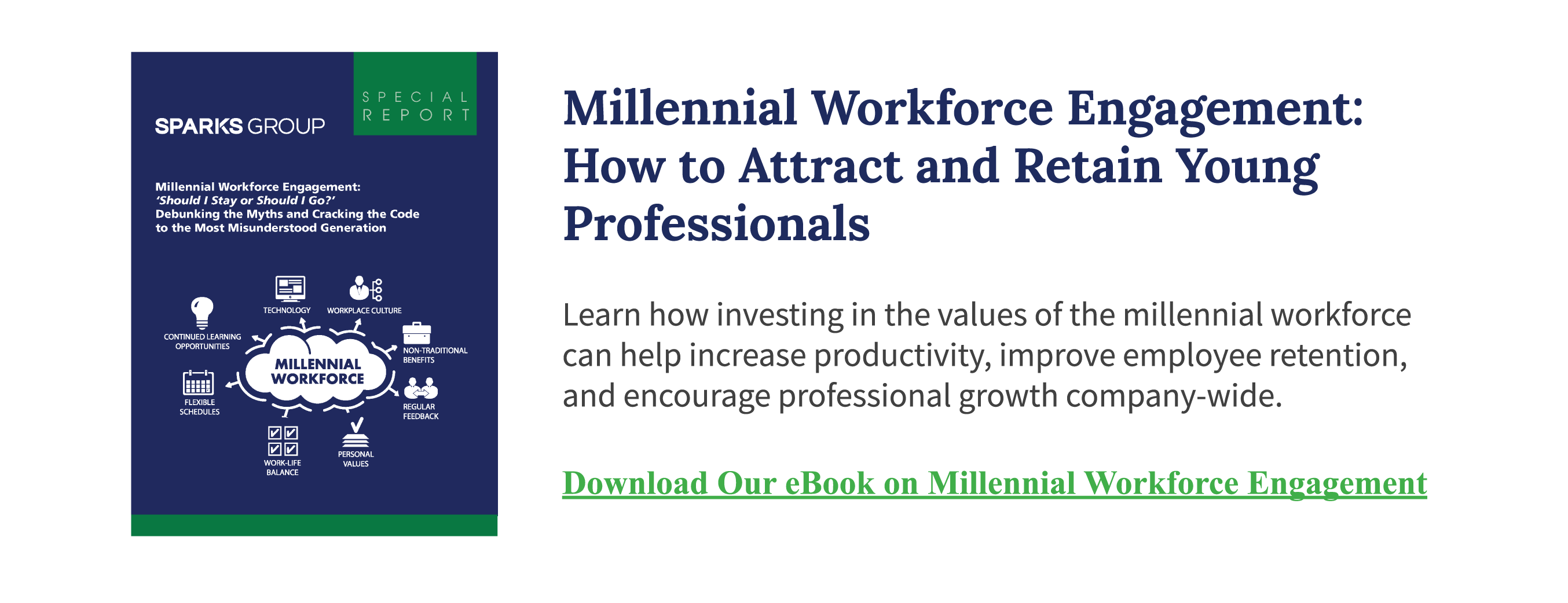Takeaways from the Webinar “What a CHRO Should Know: 5 Alarming Engagement Trends to Watch” Webinar
Quantum Workplace recently hosted a webinar to address key findings from their annual Employee Engagement Trends Report. The webinar focused on 5 concerning trends/findings from the report, along with opinions and feedback from a panel of experts that included:
- Greg Harris, CEO at Quantum Workplace
- Rusty Lindquist, VP of Thought Leadership at BambooHR
- Angela Hills, CRO at Cielo
- Joe Gerstandt, a diversity and inclusion expert and author/speaker
Trend #1: The Importance of the “Fit” Between a Position and the Employee’s Strengths
Having a position that allows an employee to fully utilize his/her strengths, has consistently increased in importance over the past two years, and is now the top driver of employee engagement for all survey respondents up to the age of 65.
“Twenty years ago, we managed in more of a remedial way—managing individual tasks to the overall goals of the employer,” said Mr. Harris. “With unemployment coming down to just over 4%, this has become an employee-driven market." He concluded that top companies now manage tasks to the individual strengths of the employee.
A separate study from Gallop also provides supporting data for this—when employees utilize and are encouraged to utilize their strengths, they are more engaged, perform better, are more loyal to the organization, and have a higher chance of positively impacting the organization’s profits.
Trend #2: Pay and Benefits.
Today, employers are paying better and providing better benefits to their employees, yet employees are still unsatisfied. Items with regards to satisfaction with pay and benefits each had significant jumps in the 2017 report and are evidence of the work that employers are incentivizing employees better than in years past.
Related: Employee Engagement Strategies That Really Work
Despite this, employees continued to provide unfavorable feedback to that they are paid fairly. “We have watched data similar to this for over 30 years and it has always remained consistent,” said Ms. Hills. “The underlying factor is that nobody ever thinks that they are being paid too much.”
Both Ms. Hills and Mr. Linquist spoke on the importance of employers, along with their leaders, confidently communicating the organization’s value proposition to employees. “Compensation isn’t about money, said Mr. Linquist. “It is about an exchange in value, with regards to the employee’s skills, education, industry experience, organizational knowledge, and more. Leaders need to understand their employer value proposition and consistently tell that story."
Diving further into pay and benefits, the gap in engagement rates continues to widen between salaried (73.6%) and hourly (60.0%) employees. Ms. Hills noted that the data did not include the gig economy, the group of workers in temporary, freelance, and independent contractor positions, who may prefer to not fit into either of these buckets.
Trend #3: Generational Differences
The topic of generational differences in the workplace has been well covered and the report provided some fascinating data on this currently trending topic.
Baby Boomers are still the most engaged; employees over the age of 65 outpaced all other age groups, with the highest level of engagement and the largest year-over-year growth in engagement rating. On the opposite side, employees under the age of 25 held the second highest level of engagement and the second largest growth in engagement rating.
The report also showed the need for professional growth and career development opportunities becomes less important across age. Millennial employees consistently ranked growth and development opportunities as a top driver for engagement. This became drastically less important in older respondent segments. The report’s findings indicated that Millennials may simply care more about growth and development or they may seek more of these opportunities than previous workforce generations.
Trend #4: Diversity and Inclusion
- Men (74.9%) are slightly more engaged than women (70.5%). Employees identifying as “another identity have significantly different drivers and are overall, less engaged.
- Hispanic/Latino employees (73.47%) hold the highest engagement rate, followed by Caucasians (73.2%), Asians (72.3%), and Native Hawaiians (71.4%).
“We are saying a lot of good things about inclusion and diversity,” said Mr. Gerstandt. “However, we have a long way to go as far as implementing those programs to ensure a more consistent employment experience.”
Learn More: Employing a Diverse Workforce
Mr. Lindquist added “HR professionals understand the value of inclusion and diversity. However, they must also develop their story telling ability to upsell these programs to leadership/executives so that programs can be implemented.”
Trend #5: Retention and Loyalty
In 2017, employees are much less tethered to their organization. Responses to the item “It would take a lot to get me to leave this organization” continued to fall (76% in 2010; under 74% in 2017). While this decrease might not seem substantial, it’s important to note that these figures are at the Best Places to Work--what would they look like at even an average workplace?
Final Thoughts From the Panel: What Will Employee Engagement Look Like 5 Years From Now?
What will HR technology look like?
Mr. Lindquist: “We will see a shift from software that helps us keep track of generalized employee data to software that helps us dissect disengagement, and prescribe initiatives to respond. We need software to help facilitate the “high touch” programs that are being implemented.”
What will be major theme(s) of HR philosophy?
Ms. Hills: “How can we utilize technology to transfer the remedial and administrative functions of HR, so that our leaders and employees can focus on more rewarding work? Additionally, we are in an era of having so much data. I am excited to see how we can use the data proactively to improve employee engagement.”







.png)